North America Technology Correspondent
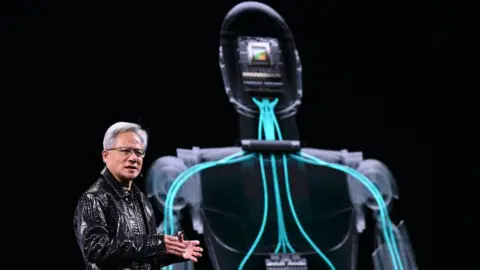 Getty Images
Getty ImagesThe boss of US chip giant Nvidia has unveiled the firm’s next-generation of gaming chips and pledged the “ChatGPT moment for general robotics is just around the corner”.
The announcements were part of CEO Jensen Huang’s keynote address at CES, the major annual technology show in Las Vegas.
The new family of gaming chips will use Nvidia’s Blackwell artificial intelligence (AI) technology to create movie-quality images, he told a packed arena.
The chips will range in price from $549 (£438) to $1,999, and are twice as fast as their predecessors, he added.
He also introduced an AI model, called Cosmos, which he said could generate video that can be used to train robots and self-driving cars at a much lower cost than current methods.
By creating what is known in the industry as “synthetic” training data, the model can help robots and cars better understand the physical world.
Users will be able to give Cosmos a text description that can be used to generate video of a world that obeys the laws of physics.
“All of the enabling technologies that I’ve been talking about is going to make it possible for us in the next several years to see very rapid breakthroughs, surprising breakthroughs in general robotics,” he predicted, though he added much more training data would be needed.
Mr Huang carried out a real-time demonstration of the new gaming chip that showed off highly detailed graphics featuring an array of textures and manoeuvres.
“It was awesome that they can do this in real time,” said Gary Yang, a graduate student in robotics at the California Institute of Technology.
“Previously we’d think of these graphics as pre-rendered.”
The new chips will start making their way to consumers starting in late January.
“I thought it was incredible,” said Scott Epstein of technology start-up Agenovate AI.
“They are continuing to innovate.”
Mr Yang and Mr Epstein were among thousands of people who watched the speech both in person and virtually on the eve of the official opening of CES.
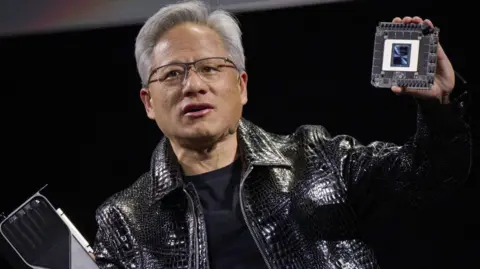 Getty Images
Getty ImagesThe convention is expected to draw more than 150,000 attendees and over 4,500 exhibitors over the next week.
Nvidia’s shares touched a new record high on Monday in the run-up to Mr Huang’s highly anticipated address.
He spent the first part of his speech talking about the company’s history.
Founded in 1993, Nvidia was originally known for making the type of computer chips that process graphics, particularly for computer games.
Thirty-one years later, Nvidia now stands at the forefront of the development of chips that power AI, with a market value of more than $3tn.
However, Nvidia still faces some significant challenges, including from regulators around the world who have raised concerns about its growing dominance of the AI chip market.
Last year, the company said it had been contacted by watchdogs in the US, UK, European Union, South Korea, and China.
Additional reporting by Graham Fraser

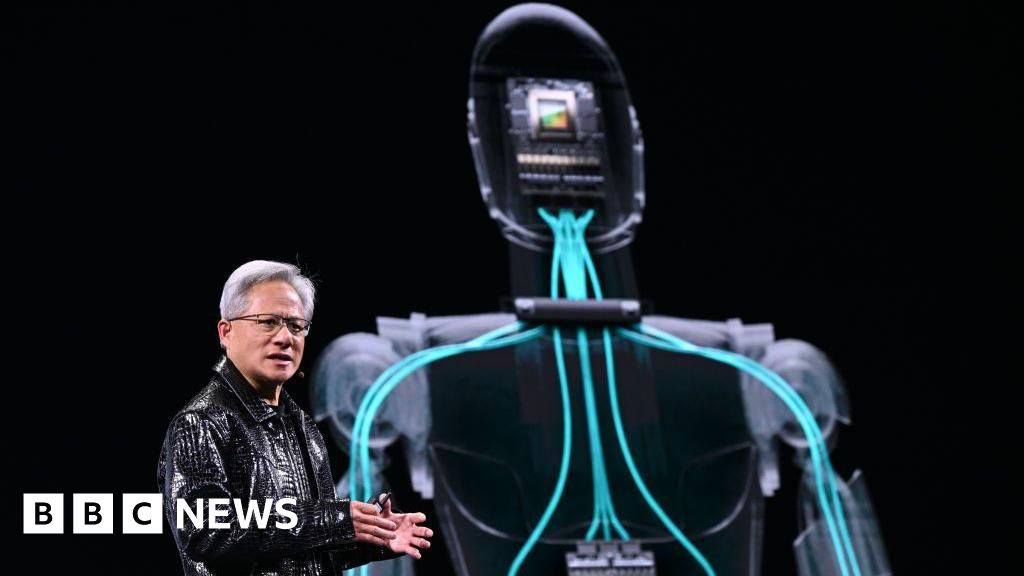





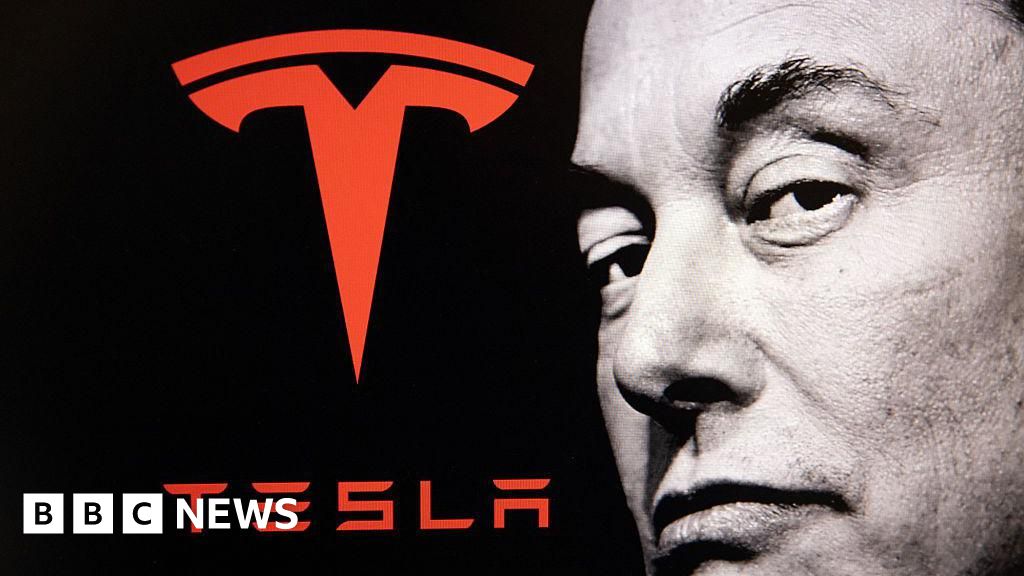
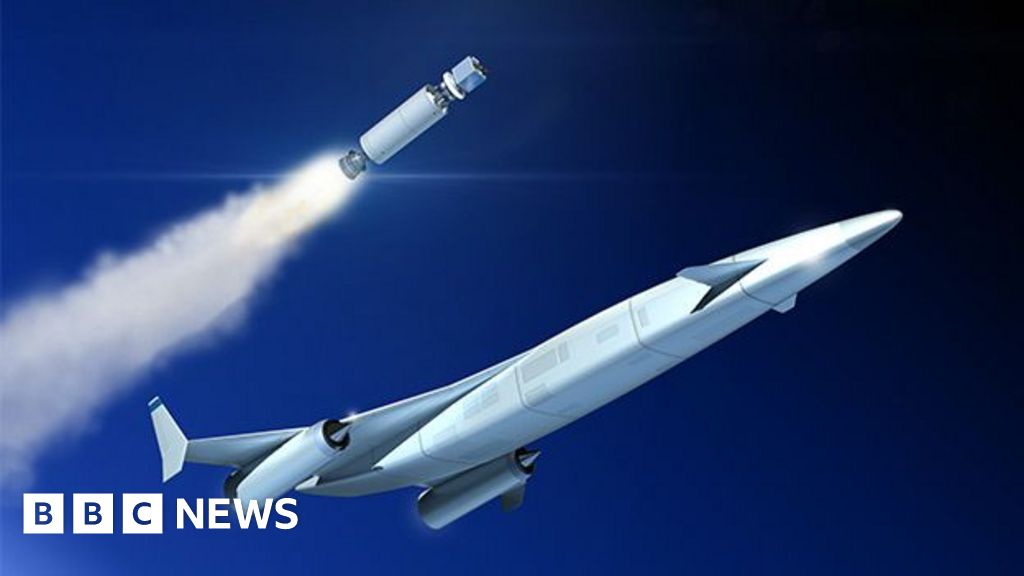

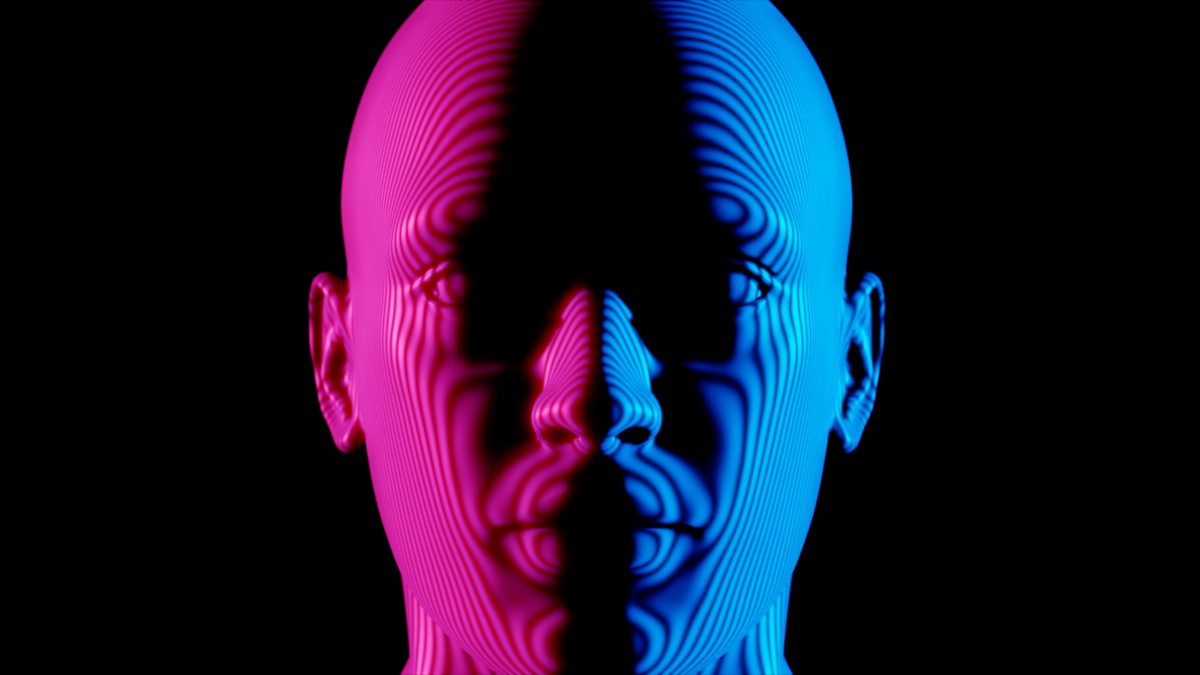






Leave a Reply